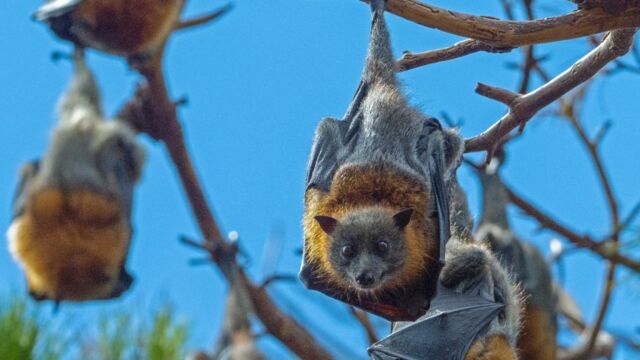A new study has found that viruses similar to the one responsible for COVID-19, which are carried by bats, infect hundreds of thousands of people every year. The research, which was conducted by scientists from US non-profit organisation EcoAlliance, estimates that an average of 407, 422 individuals are infected each year with severe acute respiratory syndrome-related coronaviruses (SARS-r-CoV) from bats.
Discover our latest podcast
Yearly cases of more than 400,000 have been estimated, but the authors of the study say that the real numbers could be in the millions.
Hotspots
About 478 million people live in areas where bats are found—predominantly in southern China, eastern Myanmar, and northern Laos. Peter Daszack, lead author of study and president of EcoAlliance says:
It's about finding communities within countries that are at risk and trying to prevent them from being infected, to help people in those communities to reduce the threat to public health.
As a part of the study, researchers first identified 23 bat species known to carry SARS-related viruses and mapped a 4.5 million kilometre area where these bats lived. They then detailed the number of people living in that area, the probability of them coming into contact with an infected bat, the people’s behaviour and their immunity.
Important study
The study was funded by the National Institute of Allergy and Infectious Disease and experts believe it may have been the very first attempt to find out how often people are infected with COVID-like diseases from bats. Edward Holmes, a professor of biology at the University of Sydney, who was not involved in the study, told Bloomberg that it was:
Probably the first attempt to estimate how often people are infected with SARS-related coronaviruses from bats.
If the circumstances are right, one of these could eventually lead to an epidemic.
The silver lining is that a majority of these cases will probably not trigger an epidemic as not all viruses are likely to cause disease or spread to other humans.
The results of the study are nonetheless important, as it could be used to monitor hotspots which would allow for faster and more accurate identification of viruses that could potentially cause the next epidemic. Peter Daszak, the president of EcoAlliance and lead author of the study, said:
If you can stop it at the level of individual infections, you have a much better chance of stopping the next pandemic.
Intermediary hosts
It’s important to note that while the study exclusively focused on SARS-related viruses in bats, they do not always pass directly from bats to humans. They can also pass through intermediary hosts like civets, raccoon dogs, or mink—which are commonly traded as food or bred for their fur in the region. Holmes says that the risk of infection by a SARS-related virus could be ‘even higher if you take into account all the possible intermediate animal species.’















